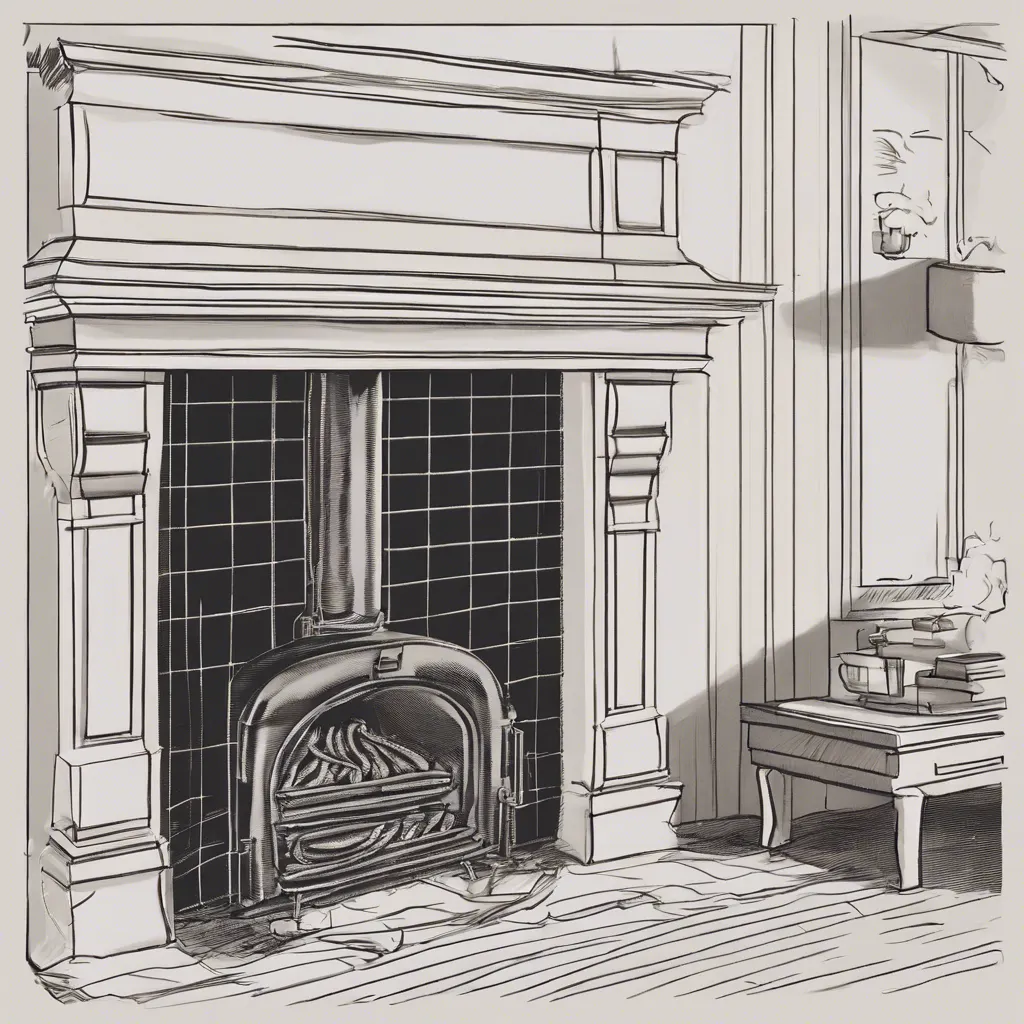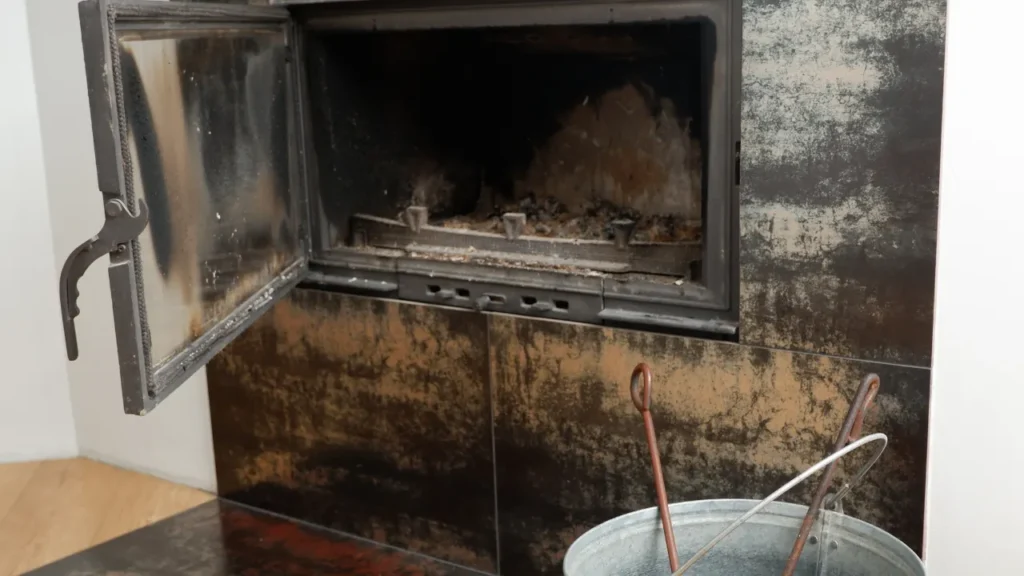Fireplaces are often the heart of a home, adding warmth, charm, and a perfect spot for gatherings. In fact, according to the Hearth, Patio & Barbecue Association, nearly 70% of homeowners say they use their fireplaces as a major design feature. But when your cozy fireplace starts experiencing backdraft, things can take a dangerous turn.
Backdraft occurs when smoke and harmful gases, like carbon monoxide, flow back into your home instead of venting outside. Not only can this compromise indoor air quality, but it also poses serious health risks.
In this guide, I’ll Walk you through the causes of fireplace backdraft, share effective solutions to fix it, and offer tips on preventing it from happening.
What Is Fireplace Backdraft?
Backdraft is a broader term that includes any reverse airflow in the fireplace system, whether caused by downdrafts or other factors.
Fireplace backdraft occurs when the normal airflow in your fireplace is reversed, causing smoke and combustion byproducts to flow back into your home instead of exiting through the chimney.
This not only creates a smoky and unpleasant environment but also allows harmful gases like carbon monoxide to enter your living space, posing serious health risks. It’s crucial to understand the difference between fireplace backdraft and chimney downdraft.
While both involve smoke entering the home, chimney downdraft specifically happens when external factors, like strong winds or air pressure differences, force air downward through the chimney.

Common Causes of Fireplace Backdraft
Poor Chimney Design or Blockages

An improperly designed chimney or one with blockages can disrupt the flow of smoke and gases out of your home.
Problems like a chimney that’s too short, a damaged or missing chimney cap, or creosote and debris buildup in the flue can all prevent proper ventilation.
Negative Air Pressure in the Home
Homes, particularly newer builds that are highly airtight, can create negative air pressure.
This happens when the air pressure inside the house is lower than outside, causing smoke and gases to be drawn back inside instead of escaping through the chimney.
Cold Chimney Flue
If the chimney is cold, so is the air inside it. Cold, dense air can block the rise of hot air from the fireplace, forcing smoke back into the room.
This is especially common with chimneys located outside the home or those that lack proper insulation.
Strong Winds Outside
Strong winds can also play a role in causing backdraft.
When wind blows across the top of a chimney, it can create a low-pressure zone that forces smoke and gases back down into the house.
How to Detect Fireplace Backdraft Early
Recognizing the signs of fireplace backdraft early is essential to prevent it from turning into a major issue. Some of the most common signs of backdraft include:
-
Visible smoke inside the house, especially when first lighting the fireplace or adding new wood.
-
Accumulation of soot around the fireplace or in the surrounding area.
-
Persistent odors or a noticeable drop in indoor air quality.
-
Back-puffing, where smoke and gases are expelled through the fireplace opening.
If you suspect your fireplace is experiencing backdraft, it’s essential to take action immediately. Consider using an air quality detector or carbon monoxide alarm to monitor the situation and call a professional chimney sweep or technician if you have any concerns about the safety of your fireplace.
Effective Solutions to Fix Fireplace Backdraft
Improve Ventilation
A simple way to tackle negative air pressure and improve airflow is by opening nearby windows before lighting a fire.
This lets fresh outdoor air into your home, which can help reduce the chances of backdraft.
Another effective option is installing an outside air kit (OAK), which provides a dedicated source of combustion air for the fireplace.
Install Chimney Caps and Dampers
Chimney caps and best fireplace dampers can significantly reduce backdraft by creating barriers that prevent smoke and gases from re-entering your home.
Chimney caps, installed at the top of the chimney, help block downdrafts caused by wind. Dampers, located inside the fireplace, can be closed when the fireplace isn’t in use to prevent drafts.
Adjust the Height and Design of the Chimney
If your chimney is too short or poorly designed, it may not generate enough draft to vent smoke and gases properly. Extending the chimney’s height or modifying its design can improve airflow.
For outside chimneys, building an insulated chase around the chimney can keep cold air from entering and causing backdraft issues.
Keep the Chimney Flue Clean and Unobstructed
A buildup of creosote or debris in the chimney flue can block airflow and contribute to backdraft. Regular chimney cleanings and inspections are vital to prevent obstructions and ensure the flue is clear.
If you notice smoke coming from the chimney cap or experience a weaker draft, it’s a good idea to have a professional inspect your chimney.
Preventing Fireplace Backdraft: Best Practices
-
Schedule regular chimney inspections and cleanings to catch and resolve any issues before they turn into serious problems.
-
Seal any air leaks around your home to maintain balanced air pressure and help prevent backdraft.
-
Use fireplace dampers properly—make sure they are fully open before lighting a fire and closed when the fireplace is not in use.
-
Consider hiring a professional to conduct a thorough inspection of your fireplace and chimney system.

Fire Backdraft and Health Risks
Fire backdraft can pose serious risks to your health and the well-being of your family. When smoke and harmful combustion byproducts are pulled back into your home, they can lower indoor air quality and expose you to dangerous substances like carbon monoxide.
Carbon monoxide is a colorless, odorless gas that can be fatal when inhaled in high amounts. Symptoms of carbon monoxide poisoning include headaches, dizziness, nausea, and fatigue.
Prolonged exposure to poor air quality can also lead to respiratory issues and other health complications.
When to Call a Professional
-
If you experience severe or persistent backdraft that doesn’t improve with basic solutions like opening windows or adjusting the damper, it may be time to seek professional help.
-
If you suspect there’s a blockage or obstruction in the chimney that needs expert inspection and cleaning, don’t hesitate to contact a professional.
-
If you have concerns about the structural integrity or design of your chimney and its effectiveness in venting smoke and gases, it’s important to consult with a specialist.
-
If you’re uncertain about the cause of your backdraft or the best approach to fix it, seeking professional advice is the best course of action.

Are There Specific Types of Wood that Reduce the Risk of Backdraft?
While the type of wood you burn isn’t the main cause of back drafting, using properly seasoned, dry firewood can significantly reduce the risk and severity of backdrafts in fireplaces and wood stoves.
Here’s why choosing the right type of wood matters:
-
Dry Wood Burns Better: Dry wood has a lower moisture content, which allows it to burn more efficiently and cleanly. This not only produces less smoke but also helps maintain a strong draft in the chimney, lowering the chance of backdrafts.
-
Hardwoods vs. Softwoods: Hardwoods like oak, maple, and ash generally have a lower moisture content when properly seasoned compared to softwoods like pine. Using hardwoods can help ensure a more consistent burn and a steady draft.
-
Avoid Wet Wood: Burning wet or unseasoned wood results in excessive smoke and creosote buildup in the chimney. Wet wood makes it harder to maintain a strong draft, increasing the risk of backdrafts.
-
Proper Seasoning: To season firewood properly, split and stack it in a dry, well-ventilated area for at least 6-12 months before burning. Seasoned wood should have a moisture content below 20%
FAQs
What causes fireplace backdraft?
How can I fix backdraft in my fireplace?
Can a chimney cap help prevent backdraft?
What health risks are associated with fireplace backdraft?
Is it safe to use my fireplace if I notice a backdraft?
Affiliate Disclosure: Fireplaceadviser.com is a participant in the Amazon Services LLC Associates Program. We may earn a commission when you click on certain links on this site and purchase.

Hello!! I am Jamal Khan. I often fix my home electric heaters and gas stove problems and research the common issues in the heating units to improve my knowledge and expertise. The aim of establishing fireplaceadviser.com is to share my expertise and knowledge with my audience.












